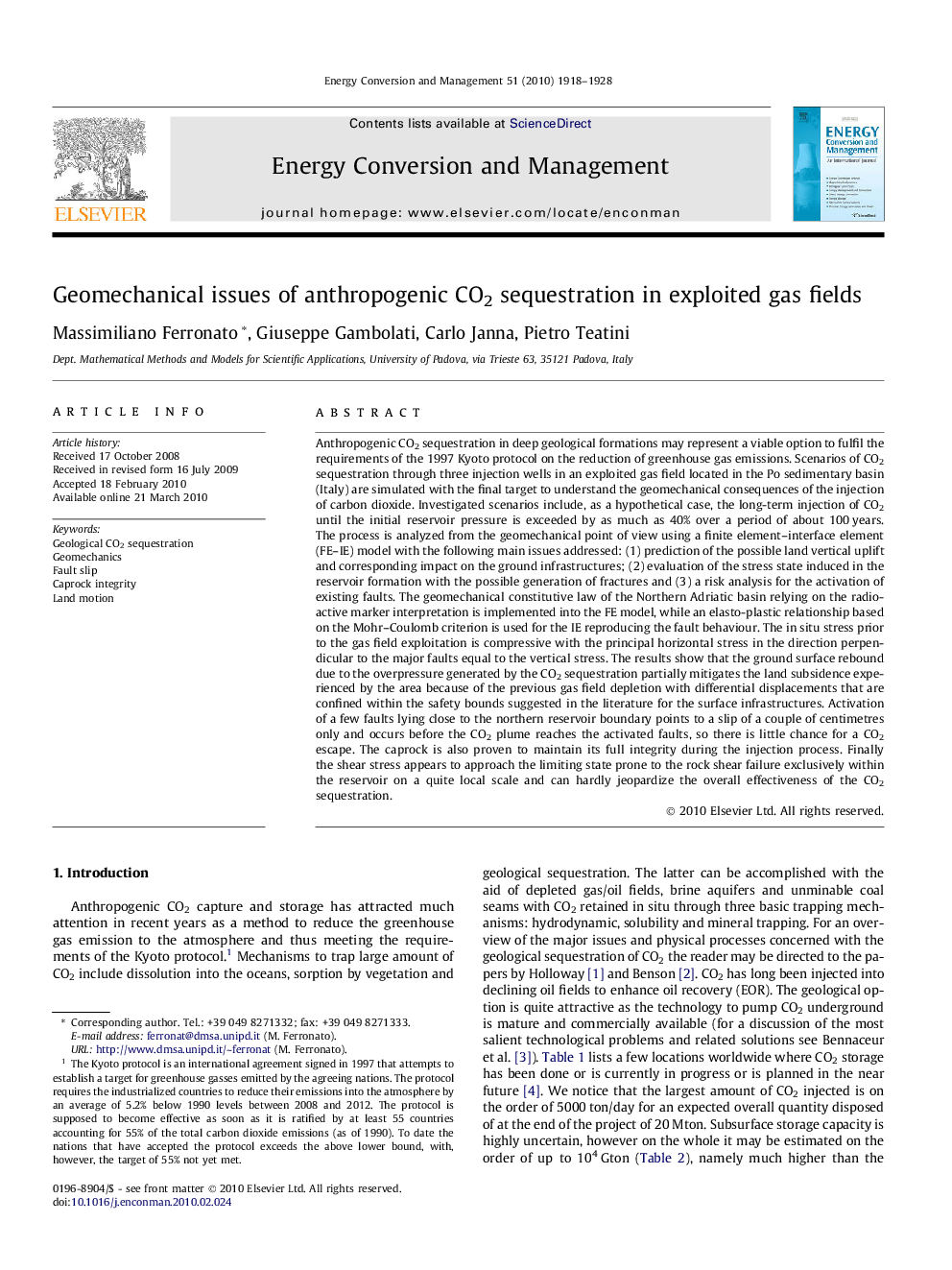| کد مقاله | کد نشریه | سال انتشار | مقاله انگلیسی | نسخه تمام متن |
|---|---|---|---|---|
| 772558 | 897712 | 2010 | 11 صفحه PDF | دانلود رایگان |

Anthropogenic CO2 sequestration in deep geological formations may represent a viable option to fulfil the requirements of the 1997 Kyoto protocol on the reduction of greenhouse gas emissions. Scenarios of CO2 sequestration through three injection wells in an exploited gas field located in the Po sedimentary basin (Italy) are simulated with the final target to understand the geomechanical consequences of the injection of carbon dioxide. Investigated scenarios include, as a hypothetical case, the long-term injection of CO2 until the initial reservoir pressure is exceeded by as much as 40% over a period of about 100 years. The process is analyzed from the geomechanical point of view using a finite element–interface element (FE–IE) model with the following main issues addressed: (1) prediction of the possible land vertical uplift and corresponding impact on the ground infrastructures; (2) evaluation of the stress state induced in the reservoir formation with the possible generation of fractures and (3) a risk analysis for the activation of existing faults. The geomechanical constitutive law of the Northern Adriatic basin relying on the radioactive marker interpretation is implemented into the FE model, while an elasto-plastic relationship based on the Mohr–Coulomb criterion is used for the IE reproducing the fault behaviour. The in situ stress prior to the gas field exploitation is compressive with the principal horizontal stress in the direction perpendicular to the major faults equal to the vertical stress. The results show that the ground surface rebound due to the overpressure generated by the CO2 sequestration partially mitigates the land subsidence experienced by the area because of the previous gas field depletion with differential displacements that are confined within the safety bounds suggested in the literature for the surface infrastructures. Activation of a few faults lying close to the northern reservoir boundary points to a slip of a couple of centimetres only and occurs before the CO2 plume reaches the activated faults, so there is little chance for a CO2 escape. The caprock is also proven to maintain its full integrity during the injection process. Finally the shear stress appears to approach the limiting state prone to the rock shear failure exclusively within the reservoir on a quite local scale and can hardly jeopardize the overall effectiveness of the CO2 sequestration.
Journal: Energy Conversion and Management - Volume 51, Issue 10, October 2010, Pages 1918–1928